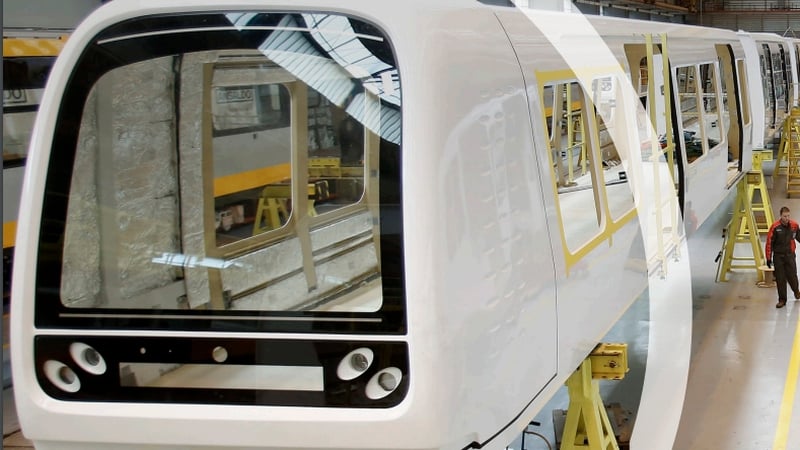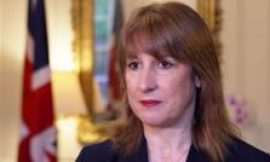The cost of a planned metro for Dublin will be higher than estimated, but the exact price tag will not be clear for another two years.
The director of the project to build a rail link between Swords and the city centre also said that that if planning is granted by the end of the summer, construction could begin in 2027. However, he said he will need to convince international construction firms that Ireland is serious about the project.
Sean Sweeney, who was appointed Project Director of MetroLink last year, said he is still aiming to deliver a metro to the capital by 2035, but that date could be delayed as there is a likelihood of judicial reviews.
He also said that that while he does not know what the National Development Plan (NDP) will outline for the project, there have been positive signals and he believes he has the political support from Government.
It is more than 1,000 days since An Comisiún Pleanála began considering whether to give the green light to the latest plans for a metro in Dublin, after Transport Infrastructure Ireland (TFI) applied for the Railway Order in November 2022.
The project was first mooted in the year 2000, but it was shelved during the financial crisis.
An oral hearing of the proposals and public submissions was held last February and lasted a number of weeks.
Decision expected by end of summer
The Planning Authority is expected to issue its decision by the end of the summer and MetroLink has planned a number of events to try and attract international construction firms to bid for the project.
If the decision arrives when expected, a tender process could get underway in the first quarter of 2026.
Dr Sweeney has refused to speculate on what the cost of the project will be, but said that construction inflation means it will be higher than the figure of €9.5 billion which was projected in 2021.
He said his team are taking the price tag “very, very seriously” and will deliver an estimated cost to Government by the end of the year, but until the tenders are received in 2027, the real price tag for the project will not be known.
“I’m not very keen to speculate until we’ve done the work because there’s a lot of work to be done,” he said.

“We’re hoping within the next two to three months to have a new number to advise Government.
“But you don’t have to be a rocket scientist to realise it’s five years since the last number, there’s been a lot of inflation and movement since then, so that the number is going to go up.
“We are hoping to start the major procurement at the end of the first quarter next year.
“Those procurements can take a year and a half, so some time in 2027 we’re hoping to have firm prices back from the bidders for the major pieces of work.
“That’s really the first time we have clarity about cost. Because until now, they’re just estimates being done by consultants giving us advice. They’re not the builder.
“The build process will run for at least five years,” he added.
“There are a range of events that could result in the builder claiming for extra money, and that will inevitably flow through.
“We can’t see over the horizon as to what some of those things things might be.
“So all we would say is, once we get the prices from the tenders, that’s the first time we’ve got real clarity about where we might like to go.
“We are hoping that there’s not much movement after that, but that’s just conjecture.”
Concern construction firms will bid for a cancelled project
Dr Sweeney said construction could begin in 2027.
He said his main concern is that international construction firms will bid for the project which has been cancelled.
Dr Sweeney added that he will need to convince them that Ireland is serious about building a metro.
“Our biggest risk at the moment is that the international construction market doesn’t turn up,” he said.
“This project has been cancelled before.
“I travel around Europe a lot, I talk to a lot of people and the standard response is, ‘We love Ireland, we love the Irish, but we really don’t know what you’re doing, and we don’t know whether you’re serious’.”
Minister for Justice Jim O’Callaghan previously voiced his objection to the plan for a terminus for the MetroLink at Charlemont in his constituency of Ranelagh in South Dublin but Dr Sweeney said he believes that the project has the political support needed from Government.
He said the Taoiseach, Tánaiste and Minister for Transport are due to take part in the international events to promote the project in the autumn that will take place in London, Paris, Vienna, Milan and Istanbul.

Dr Sweeney said their presence along with MetroLink’s inclusion in the National Development Plan will help him persuade construction firms to take on the project, despite the competitive international market for such work.
“There’s not that many builders who can build metros,” he said.
“There’s very few major constructors that can build at that level, and they’re all really busy.
“There are metros being built all around the world.
“There’s La grande Paris, which is €50 billion, there’s numerous projects in Asia, so the major constructors can choose their projects now.
“All I would say is, once we get opened, everyone will love it, and they will know that the pain was worthwhile.”
“MetroLink is one of the big ones on the globe at the moment, but no one should think it’s the biggest, there are bigger projects.
“So we’re sort of trying to position ourselves as a big, but very attractive project for these builders to look at.”
The Minister for Transport said he is considering a scheme to give partial refunds to unsuccessful bidders in an effort to get this long awaited project finally on track.
Darragh O’Brien said: “A design and tender fee scheme would see a certain capped percentage of bid costs reimbursed to unsuccessful compliant bids.
“It is important to note that as part of any agreed design and tender fee scheme the taxpayer will benefit not just through increasing the competitiveness of the overall process but also through ownership of the intellectual property of any work undertaken during the tendering process relating to MetroLink, which will then be of value when finalising the ultimate contracts and undertaking the actual works.”
Disruption during construction will be significant
Dr Sweeney, who delivered a rail project in his native New Zealand before coming here said that that disruption during the construction of the Metro will be significant but that the impact will be forgotten about as soon as the service is up and running.
“We’re going to be building stations through the middle of Dublin and for health and safety reasons they’re going to have to be secured,” he said.
“There’ll be hoarding that are placed at the edges of the boundaries of the sites that will constrict footpaths.
“It’ll constrict roads and people who have properties on those footpaths and roads will notice a difference.
“If you’re a shopkeeper there, you’ll notice less foot traffic. You’ll notice noise and disruption.
“There’s no way around that. We’ll be doing the best we can, but you can’t build a metro like this without there being some disruption.”
“Dublin is growing and this is about supporting its growth.”
Dr Sweeney added: “All I would say is, once we get opened, everyone will love it, and they will know that the pain was worthwhile.”
“I’ve been through this in Auckland. It is a challenge.
“A lot of trucks in the streets, lot of equipment, material being taken to and from the sites. If you’re driving around those areas, you will be disrupted as well, and we can’t avoid that.”
He also rejected suggestions that a Dublin does not need a metro because its current possible to travel from he city centre to the airport by bus or car in less than half an hour.
“Dublin’s total transport system is under huge pressure,” he said.
“The Port Tunnel, buses, the Luas, the Dart, they’re all at or near capacity at various times of the day.
“This is actually about just providing more capacity into a growing city, it’s not replacing any of them.
“Nothing will get you from the airport to the Central Buisness District quicker than a metro and we’ll do 20,000 people an hour.
Read more: Govt plans to inject additional €30bn into infrastructure
“Nothing can do that. Dublin is growing and this is about supporting its growth.”
However, economist Colm McCarthy said a full cost benefit analysis of the project needs to be carried out before the Government commits to funding MetroLink.
“To date there hasn’t been a proper, full cost benefit study on the Metro, believe it or not,” he said.
“All there is, is a study that was commissioned by the project promotors, not a proper study done by the Department of Public Expenditure.

“So I think it’s premature to be committing that amount of money. It will leave less room for all sorts of other projects which may well have higher benefits.”
“The public spending code said that after the project promoters have outlined what they want to do, which they’ve done, then there should be an independent study done at central Government level.
“Remarkably this has not been done with one of the biggest projects ever proposed in this country.
“The Government seems to have backed away from the public spending code.
“They’re all delivery, delivery, delivery, just get a shovel in the ground. And this is far too big for that.”
MetroLink plans to run along an 18.8km route, mostly underground from Swords north of Dublin Airport to Ranelagh in south Dublin serving 16 stops in a number of suburbs including Ballymun and Glasnevin.
Driverless trains will run every 90 seconds, which can carry 20,000 passengers in each direction every hour or 53 million passenger journeys a year.
Read more: Will Dublin’s Metrolink ever be built?




